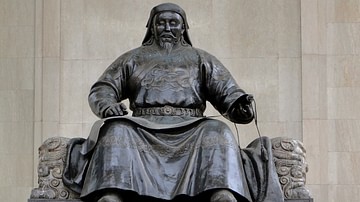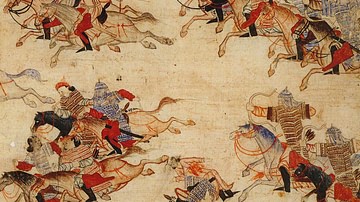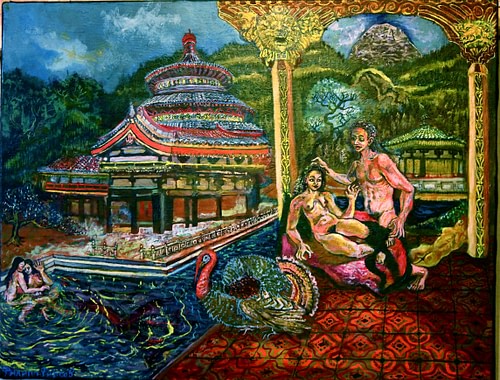
Xanadu (aka Shangdu, Shang-tu, and Kaiping) located in Inner Mongolia, northern China, was first the capital (1263-73) and then the summer capital (1274-1364) of the Mongol Empire. It came to prominence during the reign of Kublai Khan (r. 1260-1294) and was famous for its palaces, gardens and waterways.
Xanadu received lasting fame in the western world thanks to the Venetian explorer Marco Polo's description of it in his celebrated book Travels (c. 1298). The city received another boost in the popular imagination when it was made the subject of a poem by Samuel Taylor Coleridge (1772-1834). Distant and mysteriously lost Xanadu, thus, came to represent a place of mystery, splendid luxury and easy living. Although only ruins remain today of the city, it is listed by UNESCO as a World Heritage Site.
The Summer Capital
In the 13th century, the Mongol Empire ruled most of Asia and their capital was moved from Karakorum (Qaraqorum) in Mongolia to Xanadu in northeast China in 1263. Kublai Khan's first name for the new capital was Kaiping, but he then renamed it Xanadu/Shangdu, meaning 'Upper Capital' in 1273 when the capital was moved again, this time to Daidu (aka Khanbaliq), which is now Beijing, just 125 kilometres (78 miles) to the southeast. Daidu, construction of which had begun back in 1266-7, became a potent symbol of the Mongol takeover of China and the establishment of the Mongol Yuan Dynasty (1271-1368).
Xanadu was far from abandoned, though, and from 1274 Kublai Khan and his court moved back to Xanadu each summer because of its cooler climate. Xanadu functioned as the summer capital until the fall of the Yuan dynasty in 1364. The city's blend of Mongol and Chinese elements such as architecture and Buddhist temples, its use as a place of hunting - which the Mongols had a great passion for, and its location on the edge of the grasslands of the steppe and China's agricultural plains, made it another symbol of the new regime; the future was to be a mix of traditional nomadic and farming cultures. This cultural mix did not appeal to everyone, and many Mongols considered that their rulers had abandoned their traditions to become soft-living Chinese. Conversely, Chinese officials noted with dismay the lack of formal imperial protocol at the summer capital. Xanadu survived the fall of the Yuan Dynasty, but after a period of neglect, it was definitively abandoned around 1430.
Layout & Buildings
The khan himself shunned his nomadic roots and, unlike his grandfather, the Mongol Empire's founder Genghis Khan (r. 1206-1227), he decided he had had enough of living in yurt tents and instead had a fine palace built. The city, designed by Kublai's Chinese advisor Liu Bingzhong (1216-1274), was also given earth circuit walls and towers, creating the classic Chinese square plan for the whole city. The outer walls were some 3.5 to 5.5 metres (12-18 ft) in height and access was provided by six gates - two on the east and west sides and one each on the others. Each side of the perimeter wall had six towers. The entire city covered 25,000 hectares and boasted a population of around 200,000 people at its peak. There was an ample supply of water thanks to the abundance of natural springs in the area. Buildings and streets were carefully laid out considering the principles of Feng Shui, especially in relation to the mountains in the north and river to the south. Indeed, the whole city was laid out on a north-south axis with three distinct areas: the Inner City and the Outer City, and an enclosed hunting preserve.
The Outer City, where most people lived, was packed with mud and board housing. The Inner City was separated from the Outer City by a brick wall some 3-5 metres (10-16 ft) in height and which had four towers. These walls created another square area within the outer square. Here Kublai Khan and his entourage resided in a palace which was built upon a raised platform made from earth reinforced with stones and wooden beams. The palace and other buildings at the site such as the major temples were built using a mix of wood, stone, marble, and glazed tiles. To the immediate northwest of the city was a hunting preserve which consisted of meadows, woods, and lakes and which was populated by semi-tamed animals such as deer. The hunting preserve was also used for falconry and keeping herds of white mares and special cows whose milk was reserved for the khans and those given that privilege. To keep the animals in and the uninvited out, the whole preserve was enclosed in an earth wall and moat.
A Host to Important Events
The city frequently hosted great feasts and hunting parties but was an important host in other areas, too. In 1260 it had hosted a meeting of the Mongol tribal chiefs, a kurultai, to officially proclaim Kublai the Great Khan or 'universal ruler' of the Mongol Empire. In 1275 the Great Khan called another kurultai at Xanadu, this time to decide how to proceed in the last stage of his campaign against the Song Dynasty of southern China (960-1279). The Chinese state would ultimately collapse just four years later. The city also played a role in a significant religious development in the region, as a great debate was held concerning the Buddhist and Taoist religions, which led to the spread of Tibetan Buddhism across northeast Asia. Finally, the city played host to many travellers eager to see the fabled splendour of Asian rulers, the most famous of these being Marco Polo.
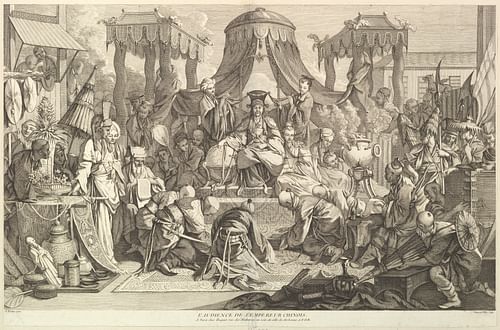
Described by Marco Polo
The Venetian explorer Marco Polo (1254-1324) travelled across Asia and served at Kublai Khan's court between c. 1275 and 1292. On his return to Europe, Marco wrote of his experiences in his book The Travels of Marco Polo or Travels (Description of the World), first circulated c. 1298. In Book 1, chapter 57 of this extraordinary work, Marco describes Xanadu, which he calls Shandu. Below is an edited extract from that chapter:
Departing from the city last mentioned [Changanor], and proceeding three days' journey in a north-easterly direction, you arrive at a city named Shandu, built by the grand khan Kublai, now reigning. In this he caused a palace to be erected, of marble and other handsome stone, admirable as well for the skill displayed in its execution. The halls and chambers are all gilt, and very handsome…Within the bounds of the royal park there are rich and beautiful meadows, watered by many rivulets, where a variety of animals of the deer and goat kind are pastured, to serve as food for the hawks, and other birds employed in the chase…In the centre of these grounds, where there is a beautiful grove of trees, he has built a royal pavilion, supported upon a colonnade of handsome pillars, gilt and varnished…This spot he has selected for his recreation on account of the mild temperature and salubrity of the air and he accordingly makes it his residence during three months of the year, namely June, July, and August.
Samuel Taylor Coleridge
Perhaps the most famous work today of the English poet and philosopher Samuel Taylor Coleridge is the Rime of the Ancient Mariner (1798) but another of his critically acclaimed poems is Kubla Khan (written in 1797, published in 1816), in which he, too, describes Xanadu (although not from any personal experience). The poem is the origin of that now much-used phrase 'pleasure dome.' Below is the opening extract, the full poem may be read here.
In Xanadu did Kubla Khan
A stately pleasure dome decree:
Where Alph, the sacred river, ran
Through caverns measureless to man
Down to a sunless sea.
So twice five miles of fertile ground
With walls and towers were girdled round;
And there were gardens bright with sinuous rills,
Where blossomed many an incense-bearing tree;
And here were forests ancient as the hills,
Enfolding sunny spots of greenery.
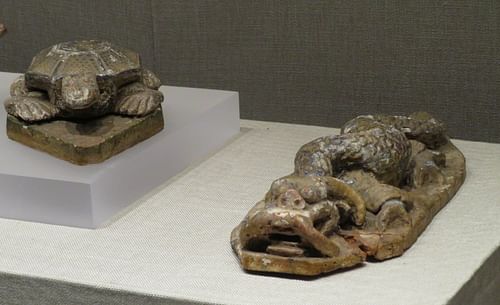
Legacy
Today the site of Xanadu is listed by UNESCO as a World Heritage Site, and there are ruins and remains of the foundations of palaces, temples, walls, tombs, a canal, and waterways. Xanadu, though, really exists with far greater clarity in the imagination than it does in the reality of ruins. Both Polo and Coleridge's works contributed immeasurably to the mystique of the Far East in western eyes and, in particular, to the idea of a lavish city called Xanadu. That very name came to be associated with mystery, exotica, magnificent splendour, and easy leisure. Consequently, Xanadu has been used as a label to conjure up all of these associations in everything from the title character's mysterious mansion in the film Citizen Kane (1941) to a continent on Titan, the largest moon of Saturn.

